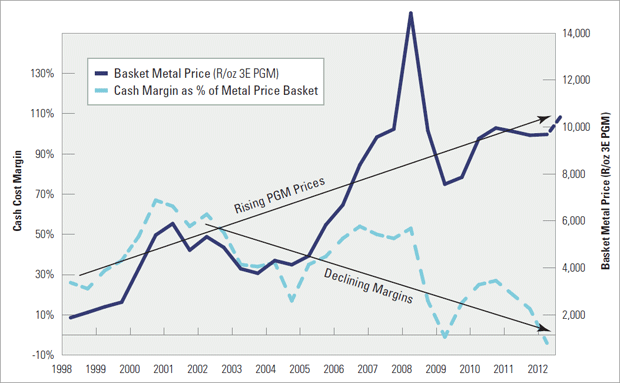by Rick Rule, David Franklin, David Baker and Shree Kargutkar, Sprott Asset Management
Hard assets are gaining momentum once again as market participants digest the potential impact of central bank printing initiatives. After last year's record level of central bank intervention, 2013 is gearing up to be an even more prolific year on the money-printing front.1 Japanese Prime Minister Shinzo Abe recently unveiled Japan's tenth Quantitative Easing program to follow the country's current $224 billion stimulus announced on January 11th. The US Federal Reserve is steadily printing US$85 billion a month under its QE3 & QE4 programs, and reports indicate that the European Central Bank is close to launching its much-awaited Open Market Transaction (OMT) program to purchase European sovereign debt. It's a money-printing party and everyone's invited. Even the new Bank of England head, Mark Carney, has hinted of plans to launch more monetary stimulus.2
Professional investors have noticed and are expressing concern over the consequences of concerted currency devaluation and the continuation of zero-percent interest rates. PIMCO's Bill Gross, aka "The Bond King", is now regularly touting gold and hard assets as a prudent investment in 2013.3 While his advice appears to have fallen on deaf ears, interest in inflation protection is once again on the rise. We continue to believe that precious metals remain the place to be invested in this environment and are always interested in different avenues with which to participate in the sector's inevitable rise.
Despite being long-time precious metals enthusiasts and active investors in gold and silver, we did not focus on "the other precious metals", platinum or palladium, until very recently. Our interest in the space was ignited by a client's request to assess investment opportunities in the debt and equity of Platinum Group Metal (PGM) mining companies - an exercise that came up almost completely dry. As long-time resource equity investors, we are familiar with the mining industry's supply/demand cyclicality and the impact it has on commodity prices. Looking more closely at the PGM miners, the platinum and palladium industry reminds us of the uranium industry back in 2003. Like uranium, platinum and palladium are crucial to a number of important industrial applications where demand for them is relatively inelastic to price. And like uranium in 2003, palladium is also marked by an opaque, but rapidly diminishing foreign supply stockpile, which had previously balanced out the market and effectively capped the price. Investors will remember that uranium proceeded to perform extremely well from 2003 onwards based on the fundamental supply/demand imbalances that ensued. Our assessment of the PGM industry has led us to believe that platinum and palladium have the potential to do the same. The one difference being, however, that whereas in uranium, where we chose to build our exposure primarily through uranium mining equities, platinum and palladium exposure appears to be best gained through the metals themselves… hence the launch of the Sprott Physical Platinum & Palladium Trust this past December (NYSE Arca: SPPP, TSX: PPT.U).
PLATINUM
On January 15th, the world's largest platinum producer, Anglo American Platinum Ltd. (Amplats), announced plans to shut down several of its mines, resulting in the layoff of 14,000 mine workers and the reduction of approximately 400,000 ounces of annual platinum production. Given that global platinum mine production has averaged approximately 6.2 million ounces per year, the Amplats announcement is equivalent to almost 6% of global annual mine production in 2012, representing a substantial shortfall to the metal's supply/demand balance.4 The platinum spot price appreciated by over $30/oz following this announcement out of South Africa.
Our desire to launch the Sprott Physical Platinum & Palladium Trust was partly based on an expectation of further supply disruptions out of South Africa, which produces close to 75% of the world's annual platinum supply and 37% of the world's palladium. Union-led labour strife has become a growing concern in the country, where some 46 people were killed this past summer in violent strikes at Lonmin's platinum mine in Marikana. The labour unrest has come at a time when the industry is already suffering from persistent operating challenges and declining profit margins (see Figure A). The geological nature and depth of many of the country's platinum mines requires large amounts of manual labour, and South African mine workers have become increasingly politicized in their struggle for higher wages. At today's platinum price, however, most platinum miners are unprofitable after netting out the costs of labour, electricity and equipment required to produce the metal. Many are cash flow negative and cannot meet the workers' request for higher wages without sustaining further losses. Roger Baxter, senior executive at the Chamber of Mines of South Africa, recently stated that at least 50% of the country's platinum industry is marginal or in a loss-making position today.5 In addition, many of the mining operations are suffering from declining ore grades, further lowering mine output. The result has been a 25% decline in annual South African platinum production since 2006. As the Amplats decision plainly underscored, at today's prices, platinum mining in South Africa is simply no longer a profitable affair.
FIGURE A: PRODUCTION MARGIN AND BASKET PRICE
 Source: CIBC World Markets Equity Research 2012, PGM Basket consists of Platinum (~60%), Palladium (~30%) and Rhodium (~10%)
Source: CIBC World Markets Equity Research 2012, PGM Basket consists of Platinum (~60%), Palladium (~30%) and Rhodium (~10%)
FIGURE B

Source: Johnson Matthey Platinum 2012 Interim Review
The impact of South Africa's mining woes has completely shifted the platinum market's supply fundamentals over the past year, moving it from a state of oversupply in 2011 to a net supply deficit in 2012 (see Figure B). The recent developments in South Africa strongly suggest platinum's supply deficit will continue into 2013, supporting the platinum spot price and potentially moving it to much higher levels. In fact, some industry estimates have suggested the platinum market will experience a deficit as high as 760,000 ounces in 2013.6 Platinum miners will not be able to increase production unless the platinum price rises to a level capable of incentivizing further development.










